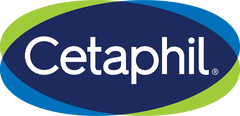5 Common Baby Skin Problems and How to Solve Them with Cetaphil Baby Mild Bar
A baby’s delicate skin, with its thinner barrier, needs extra care. The right soap cleanses gently without stripping natural moisture, while the wrong choice risks dryness or rashes. Cetaphil Baby Mild Bar, dermatologist-approved, ensures safe, consistent care. This blog explores common skin concerns and gentle cleansing solutions.

What Are the Most Common Baby Skin Problems?
Why this matters for every parent:
- The physiology of babies is different: The epidermis is thinner, the acid mantle is unexhausted, and natural moisturizing factors are less than in adults. This renders the infant's skin more permeable and responsive to the environment, detergents, and even rubbing caused by the diapers and clothing.
- Due to this sensitiveness, apparently minor decisions, such as re-changing the soap used by children, the laundry detergents, or taking a shower a bit more frequently, may contribute to irritation. A routine of cleaning that is mild, pH-balanced, and regular is essential to maintaining the healthy skin barrier and minimizing exacerbations of the most common concerns.
- Most common cases of infant skin problems that dermatologists encounter in the first year include diaper rash, eczema (atopic dermatitis), baby acne, cradle cap (infantile seborrheic dermatitis), and dry skin. With knowledge of these issues, their triggers, and solutions to care daily, bathing becomes less of a burden; it becomes a protective ritual that helps children develop appropriately.
Diaper Rash
- What it is: Inflamed patches of redness around the diaper region due to moisture, friction, and, occasionally, urine and stool.
- Typical triggers: Excessive moisture, diapers being changed less often, the use of rough wipes or soaps, and tight-fitting diapers that prevent moisture from exiting.
What helps:
- Use a gentle, pH-balanced syndet bar during baths to cleanse without over-drying.
- Pat the area dry (no rubbing) and apply a zinc oxide barrier cream as advised by your pediatrician.
- Change diapers promptly; allow brief “diaper-free” time to air out skin daily.
- Choose non-irritating, fragrance-free baby skin products to minimize irritation.
Eczema
- What it is: Dry, itchy, coarse areas that may occur on cheeks, folds, or torso; tend to flare with droughtiness, heat, or irritants.
- Common Triggers: Usually, seasonal dryness, fragranced products, over-cleansing, hot water, and some fabrics are the common triggers.
What helps:
- Bathe with lukewarm (not hot) water and a dermatologist-recommended newborn soap that won’t strip oils.
- Moisturize immediately after bathing to “seal” hydration.
- Dress baby in breathable cotton; avoid wool or scratchy fabrics.
- Discuss persistent or severe eczema with your pediatrician.
Baby Acne
- What it is: Little, red or white bumps on the cheeks, forehead, or nose that may show up during the first few weeks.
- Common triggers: Immature pores, maternal hormones, and occlusive products may play a role.
What helps:
- Keep cleansing simple with a mild infant bath soap, no harsh scrubbing.
- Avoid oil-heavy or strongly fragranced products on the baby’s face.
- Resist the urge to “treat” with actives; baby acne usually resolves on its own.
- Consult your pediatrician if lesions worsen, ooze, or persist.
Cradle Cap
- What it is: The Scalp (and sometimes eyebrows) is covered with yellowish, greasy scales that are associated with an excess of sebum and yeast growth.
- Common triggers: Natural newborn oil production; typically not painful or itchy.
What helps:
- Soften scales with a few drops of baby-safe oil before bath time.
- Cleanse gently with a mild syndet bar; don’t pick at scales.
- Use a soft brush after bathing to lift loosened flakes.
- Seek pediatric guidance if redness, swelling, or odor is present.
Dry Skin
- What it is: Flaky, rugged areas that usually arise following lengthy bathing or hot water, or excessive foaming cleansers.
- Ordinary provoking factors: Low humidity, extended times of soaking, and coarse surfactants, which remove protective lipids.
What helps:
- Short, lukewarm baths (5-10 minutes) with a gentle syndet bar.
- Pat dry and moisturize immediately to lock in water.
- Run a cool-mist humidifier in dry seasons.
- Dress in soft, breathable fabrics; avoid overdressing.
How Cetaphil Baby Mild Bar Addresses These Skin Issues
Gentle Cleansing
- Why it is important: When the barrier is observed, the baby's skin flourishes. Excessive cleansing or harsh soaps may interfere with the acid mantle, beckoning the dryness or irritation.
- The way Cetaphil works: The Cetaphil Baby Mild Bar is designed to cleanse without being harsh to the sensitive skin, perfect to use every day on the face and the body. Its mild surfactants carry away their impurities without destroying vital oils. It is a reliable initial move; in any case, whether you are treating diaper rash, baby acne, or regular dirt on the hands of curious crawlers.
- Parent tip: You can pour the lather in your hands and then apply the foam on the baby's skin to ease friction and make the wash feather-light.
Moisture Retention
- Why it is important: Infants lose water more rapidly through the dermatome; dryness may worsen eczema or cause tightness in the post-bath period, making it uncomfortable.
- The role of Cetaphil: Cetaphil Baby Mild Bar contributes to the skin being soft after the bath, never tight or scratchy. Use a baby moisturizer to seal in the hydration (see the Cetaphil Baby products).
- Parent tip: Use the moisturizer within three minutes of patting dry to help keep the water in the skin; this little timing trick is significant.
Non-irritating Properties
- Why it is important: Smelling, dyes, and rough additives may be a bonus irritant to infants and to babies with eczematous or hypersensitive skin.
- The way Cetaphil works: Cetaphil Baby Mild Bar was developed through a dermatologist-tested, non-irritating formula developed to reduce the chances of irritation and make bath time worry-free. This is particularly useful in the event that you are standardizing routines among caregivers or co-parenting families.
- Parent tip: Have the same bar in your diaper bag and at all the places you stay to be consistent with baby's skin.
How Cetaphil Baby Mild Bar Addresses These Skin Issues
Gentle Cleansing
- Why it is important: When the barrier is observed, the baby's skin flourishes. Excessive cleansing or harsh soaps may interfere with the acid mantle, beckoning the dryness or irritation.
- The way Cetaphil works: The Cetaphil Baby Mild Bar is designed to cleanse without being harsh to the sensitive skin, perfect to use every day on the face and the body. Its mild surfactants carry away their impurities without destroying vital oils. It is a reliable initial move; in any case, whether you are treating diaper rash, baby acne, or regular dirt on the hands of curious crawlers.
- Parent tip: You can pour the lather in your hands and then apply the foam on the baby's skin to ease friction and make the wash feather-light.
Moisture Retention
- Why it is important: Infants lose water more rapidly through the dermatome; dryness may worsen eczema or cause tightness in the post-bath period, making it uncomfortable.
- The role of Cetaphil: Cetaphil Baby Mild Bar contributes to the skin being soft after the bath, never tight or scratchy. Use a baby moisturizer to seal in the hydration (see the Cetaphil Baby products).
- Parent tip: Use the moisturizer within three minutes of patting dry to help keep the water in the skin; this little timing trick is significant.
Non-irritating Properties
- Why it is important: Smelling, dyes, and rough additives may be a bonus irritant to infants and to babies with eczematous or hypersensitive skin.
- The way Cetaphil works: Cetaphil Baby Mild Bar was developed through a dermatologist-tested, non-irritating formula developed to reduce the chances of irritation and make bath time worry-free. This is particularly useful in the event that you are standardizing routines among caregivers or co-parenting families.
- Parent tip: Have the same bar in your diaper bag and at all the places you stay to be consistent with baby's skin.
Additional Tips for Baby Skin Care
Bathing Practices
- Keep baths brief and sweet: 5 to 10 minutes in lukewarm water; long, hot baths can dry sensitive skin.
- Apply a pH-balanced soap: A neutral syndet bar like Cetaphil Baby Mild Bar with a pH of 5.5 is supportive of the barrier and capable of removing dirt.
- Pat, don’t rub: When you have wiped the baby down, pat them with a soft towel; rubbing can cause irritation and redness to delicate baby skin.
- Target folds: Dry and cleanse creases (neck, thighs, underarms) cautiously to avoid macerating and rashes.
Skin Hydration
- Hydrate immediately: Put a lotion on the baby immediately after the bath to seal in the water.
- Monitor water temperature: Warm water raises the transepidermal water loss; lukewarm water is gentler to infant skin.
- Humidity helps: A cool-mist humidifier may assist in keeping up with water in dry climates.
- Choose gentle formulas: Opt for dermatologist-recommended, fragrance-free baby skin products whenever possible.
Diapering Habits
- Change as soon as possible: Wet or dirty diapers. This is done to avoid long-term exposure to irritants by washing them quickly.
- Wipe: Wipe with warm water or fragrance-free wipes and then pat dry.
- Guard the barrier: Use a pediatrician-recommended barrier cream as necessary.
- Allow skin airing: Provide diaper-free time every day to limit the amount of moisture.
Conclusion
Starting with thoughtful daily care, by selecting a syndet bar that does not compromise cleaning, it assists in safeguarding the growing skin barrier, lessens dryness, and reduces frequent worries such as diaper rash, baby acne, cradle cap, and eczema-prone flakiness. The Cetaphil Baby Mild Bar is a bathing product that adds softness that is guaranteed by dermatologists and helps families establish a consistent routine that actually helps the baby's skin.
Explore more baby-friendly options on the Cetaphil Baby products page, and build your routine with confidence.
FAQs
Can I use Cetaphil Baby Mild Bar on newborns?
Yes, Cetaphil Baby Mild Bar is suitable for newborns. It is dermatologist-tested, non-irritating, and free from harsh chemicals, making it safe for delicate skin. Always follow recommended bathing practices to protect your baby’s natural skin barrier.
How often should I bathe my baby to avoid skin problems?
Experts recommend bathing newborns two to three times a week. Over-bathing may strip natural oils, leading to dryness. Using a gentle cleanser like Cetaphil Baby Mild Bar helps maintain hydration while keeping your baby’s skin clean and healthy.
What should I do if my baby’s skin doesn’t improve with Cetaphil?
If your baby’s skin condition persists or worsens despite using Cetaphil Baby Mild Bar, consult a pediatrician or dermatologist. They can check for underlying issues and suggest appropriate treatments. Always avoid switching products too frequently without medical advice.
Are there certain ingredients in baby products I should avoid?
Yes. Avoid products with parabens, sulfates, dyes, artificial fragrances, or alcohol, as these can irritate sensitive baby skin. Dermatologist-recommended options like Cetaphil Baby Mild Bar are specially designed to provide safe, gentle, and effective cleansing without harmful ingredients.
H3: How can I tell if my baby’s skin issue requires medical attention?
Seek medical attention if your baby’s skin shows persistent redness, swelling, oozing, severe dryness, or discomfort that doesn’t improve with gentle care. Rashes accompanied by fever or spreading rapidly also require prompt pediatric or dermatological consultation.


.png?sw=450&sh=450&sm=fit&q=85)
